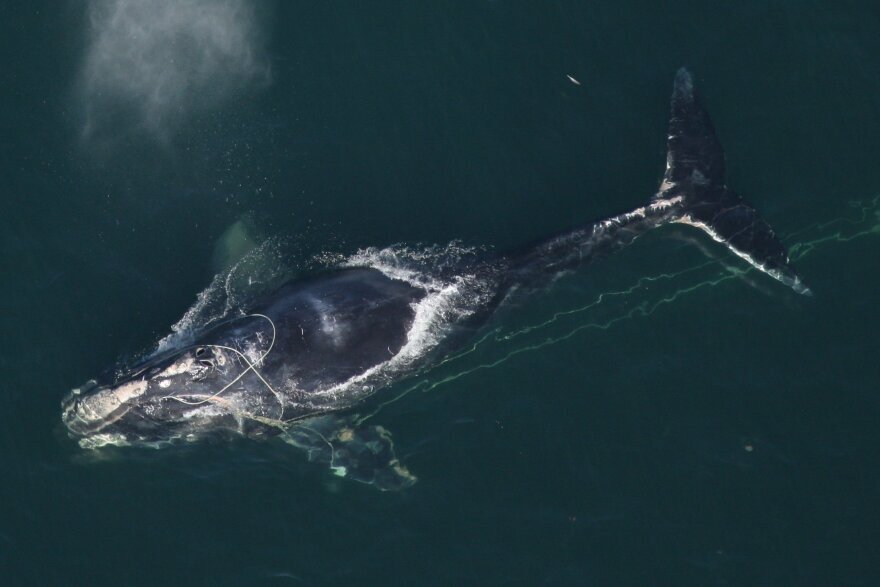North Atlantic right whale population drops to 336, the lowest estimate in 20 years

Aerial photographs show a North Atlantic right whale entangled in rope off Daytona Beach in 2010. A 2012 study from the New England Aquarium revealed that more than 80 percent of right whales have been entangled at least once in their lives and 60 percent have been entangled more than twice. (NOAA News Archive 123110)
The population of North Atlantic right whales fell to an estimated 336 in 2020, the latest indication that the critically endangered species is edging closer to extinction.
That number represents an 8 percent decrease from the 2019 estimate, and the lowest population estimate for the species in nearly 20 years, according to the North Atlantic Right Whale Consortium, which announced the news today ahead of its annual meeting.
“We are obviously discouraged by this estimate, but quite frankly, not surprised,” Heather Pettis, associate scientist in the New England Aquarium’s Anderson Cabot Center for Ocean Life and executive administrator of the consortium, said in a statement.
In 1990, the population number plummeted to 268, and that number could have been even lower after the whales were nearly hunted to extinction by the early 1900s, but it recovered to a recent peak of 481 in 2011. Since then, human impacts like entanglements in rope and fishing gear and collisions with ships have been leading causes of death for the whales, causing the population to plummet. In the past 10 years, the species has declined by 30 percent.
